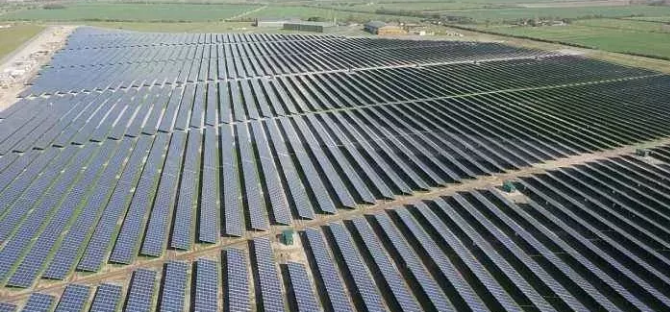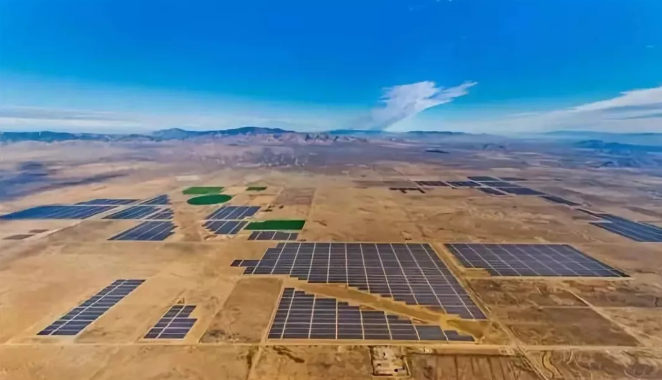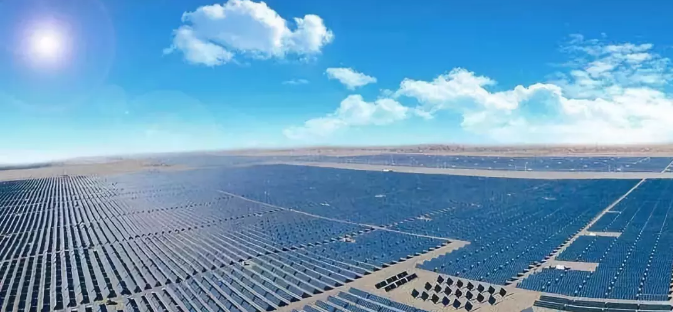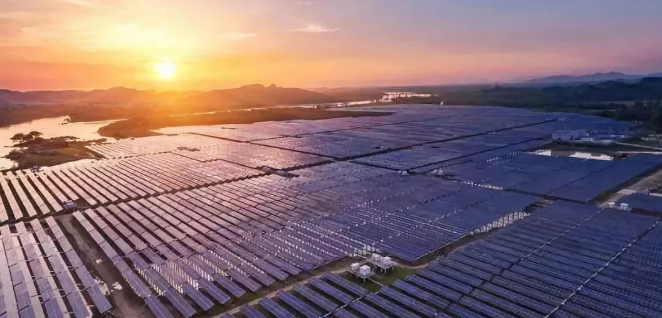To reduce the cost of clean electricity, power companies around the world are expanding their solar power plants. This is most evident in southern Egypt, where the world's largest solar power plant will be built and more than 5 million photovoltaic panels are currently being built. After the completion of next year, the $4 billion Benban solar power plant near Aswan will be 10 times larger than New York's Central Park and will generate 180 million watts. This is about the total output of the two nuclear power plants, almost twice the planned capacity of the large Villanueva nuclear power plant in Coahuila, Mexico. The state of Coahuila is currently the largest nuclear power plant in the Americas. (The largest solar power plant in the United States is the 580 MW Sun Star facility near Los Angeles.) The 579 MW "Sun Star" project is two solar installations in Kern County and Los Angeles County, California. But Benban may not keep this title for a long time. China plans to build a 2 billion-watt solar power plant in Ningxia, a province in the northwestern province. Gujarat in western India recently approved a 5 billion-watt power plant. Japan is even studying the establishment of a large-scale solar power plant in space. The bigger the cheaper Benjamin Attia, a solar energy analyst at Wood Mackenzie, an energy consultancy in Edinburgh, Scotland, said: “Large projects can save a lot of money. Logistics, transportation, construction and installation benefit from economies of scale. We will start to see More 10 to 2 billion watts of solar power parks may even reach tens of billions of watts in the future." The collapse in solar panel prices is part of the cost savings. A 2017 report by the US National Renewable Energy Laboratory found that from 2010 to 2017, the cost of photovoltaic systems fell five-fold. Even the punitive tariff imposed by the Trump administration on Chinese solar panels earlier this year is unlikely to slow the spread of large-scale solar power. In the United States, the cost of large-scale solar power generation is already lower than coal and much cleaner than coal. “The government is already awake,†Attia said. “They just want to add new power supplies in the cheapest and fastest way. For nuclear energy, it can take 10 years to purchase, and for natural gas, it can take up to 4 years. If you want to say solar energy, the progress can be smooth. You can complete a fairly large project in 18 months. For developing countries, solar energy is now a particularly attractive option. When solar panels were still expensive, only wealthy countries could afford subsidies and tax breaks, so that solar power plants could be financed. But now, in many sunny regions of the world, without financial assistance (as is the case in parts of the US and other developed countries), solar power is still competitive with other sources of energy. Some of the largest new solar power plants, including Benban, were built so that solar panels are not owned and operated by a utility company, but are shared by dozens of companies. Attia says this arrangement helps reduce red tape associated with licenses and regulations, and even allows small solar start-ups to benefit from economies of scale. Key role of infrastructure But even if the cost of solar panels continues to decline, there is still a ceiling on the scale of solar power plants in the future. Solar power plants can only be useful where the electricity they generate can reach where they are needed, and homes and factories that typically require electricity are hundreds of miles away. In addition, the intermittent power generated by the new large-scale wind and solar power plants will also make the transmission network unbearable. Daniel Kirschen, a professor of electrical engineering at the University of Washington in Seattle, said: “These locations are usually very remote, and the grid around the new solar or wind power plant will not be very strong, so you need to strengthen the grid. And this can be very expensive." In particular, China has been striving to solve infrastructure problems. In the past, new solar power plants could only use up to 70% of electricity. One potential solution is to build a so-called super grid that can deliver electricity to far away, ensuring that electricity is not wasted. A grid connecting China, South Korea, Russia and Japan is being proposed, and another planned European super grid may be built across the European continent by the end of 2020. a place where the day does not fall Of course, not every country can participate in the solar revolution. For example, crowded, cloudy Japan has neither open space nor reliable sunshine hours for large solar power plants. Therefore, it hopes to build a solar power station in a place where there is always light and space is not a problem: outer space. The Japan Aerospace Exploration Agency (JAXA) is working to bring a 1 billion watt orbital solar power plant into orbit, which can generate electricity 24 hours a day. Beginning in the 1930s, the Solar Space Station will emit energy in the form of microwaves to an artificial island covered with billions of antennas. Despite the availability and safety issues of space power plants, the agency has demonstrated a system that can deliver energy to hundreds of yards. Aside from space solar power plants, the biggest competitor for large solar power plants on Earth may be small solar panels installed on the top and backyard of houses. Large-scale solar power plants account for the vast majority of the total installed solar panels in the world, but in developed countries such as the United States and Germany, the proportion of household solar energy is roughly equal. Homeowners can sell electricity back to the grid and even use the batteries originally developed for electric vehicles to store electricity at home. Solar microgrids are also becoming more prevalent in rural areas where there is a lack of good electrical connectivity or in developing countries prone to extreme weather events. No matter how humans use solar energy, the good news is that there is a lot of solar energy. The solar energy that reaches the Earth's surface within two hours is more than all the forms of energy we consume each year. A solar power plant that covers only 2% of the Sahara desert can meet all of the world's energy needs – if we can build a planetary super grid to take advantage of it. Other Night Light,Projector Nightlight For Star Sky ,Led Emergency Light,Night Light For Moon Sky NINGBO ZHENGUO INTELLINGENT LIGHTING CO.,LTD , https://www.zguolight.com




Unprecedented ultra-large-scale photovoltaic power plants will rise all over the world
Abstract In order to reduce the cost of clean electricity, power companies around the world are expanding their solar power plants. This is most evident in southern Egypt, where the world's largest solar power plant will be built and more than 5 million photovoltaic panels are currently being built. After the completion of next year...